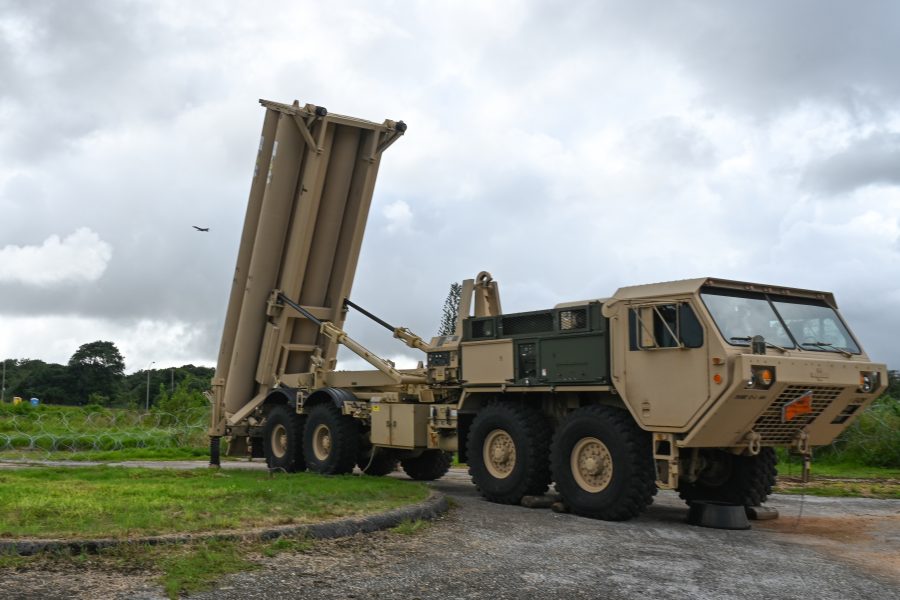The House Armed Services Committee, concerned about missile warning and defense, is pressing for more information and analysis on the threats and countermeasures needed to protect the nation from long-range fires.
The HASC’s version of the 2024 National Defense Authorization bill, approved in the early morning hours of June 22, would require the Secretary of Defense to determine whether or not the Pentagon has enough resources and capabilities to defend its bases and deployed forces in the Indo-Pacific and Europe from “hypersonic-, ballistic-, cruise-missile and air attack.”
The report would be due by June 30, 2024, plans for how to defeat such attacks through 2030. The provision was introduced by Rep. Don Bacon (R-Neb.), a former Air Force brigadier general, and supported by the Air & Space Forces Association, which publishes Air & Space Forces Magazine.
“AFA believes this study and plan will be a significant tool for enabling the Department of Defense and Congress to determine if our forces have sufficient counteroffensive and defensive weapons systems, and for recommending how best to increase our capabilities to meet these growing threats,” said AFA Chairman Brig. Gen. Bernie Skoch (Ret.) in a letter to Bacon. The letter, co-signed by AFA President Lt. Gen. Bruce “Orville” Wright (Ret.) continues: “Recent events in Europe and Asia only underscore the critical importance of having a robust defense against missile and air attack.”
Another amendment, offered by Rep. Michael Turner (R-Ohio), would direct the Pentagon to provide “options to improve the existing integrated air and missile defense architecture to detect, track, and defend against increasingly complex adversarial missile threats to the territory of member countries of the North Atlantic Treaty Organization and deployed members of the United States Armed Forces.”
Missile defense in Europe, where NATO members are concerned by Russia’s missile and drone attacks on Ukraine, is a growing concern. Ukrainian defenses have surprised many, but Russian missiles, rockets, and drones continue to impose costs and destroy targets, killing hundreds.
In Asia, China’s advanced hypersonic missiles are feared able to challenge U.S. defenses in new ways. To defense Guam, the closest U.S. territory to the Pacific rim, the Department of Defense wants to invest $1.5 billion in a new missile and air shield in fiscal 2024, part of a long-awaited effort to better defend the Air Force and Navy bases on the island.
Two more amendments approved by the HASC seek greater transparency about those plans. Rep. Dale Strong (R-Ala.), sponsored an amendment seeking a report from the Missile Defense Agency on anticipated munitions requirements for the Guam missile defenses. and the associated fielding schedule for the new system. And a second measure, proposed by Del. James Moylan (R-Guam) would require a report by March 2024 and a briefing to Congress by November to define a concept of operations for how the system will defend Guam. The lack of definition, Moylan said, makes “it difficult for the program to maintain schedule and remain on track to achieve an initial operational capability.”
Another amendment offered by Rep. Seth Moulton (D-Mass.) would require the Air Force to procure up to six over-the-horizon radars for U.S. Northern Command to detect “increasingly complex threats.”
HASC members also want more insight into the Pentagon’s missile defense plans. An amendment from Rep. Doug Lamborn (R-Colo.) would require the Air Force and U.S. Strategic Command to brief Congress on how they are integrating the Space Development Agency’s planned megaconstellation of low-Earth orbit satellites—called the Proliferated Warfighter Space Architecture—into the military’s broader missile warning enterprise.
Finally, to respond to missile threats with force, a provision proposed by Rep. Scott DesJarlais (R-Tenn.) seeks an independent analysis of how “space-based interceptor capabilities” could be integrated into U.S. defenses. The measure would require the study to consider the technical risks, maturity, and estimated costs for developing and operating such weapons.


